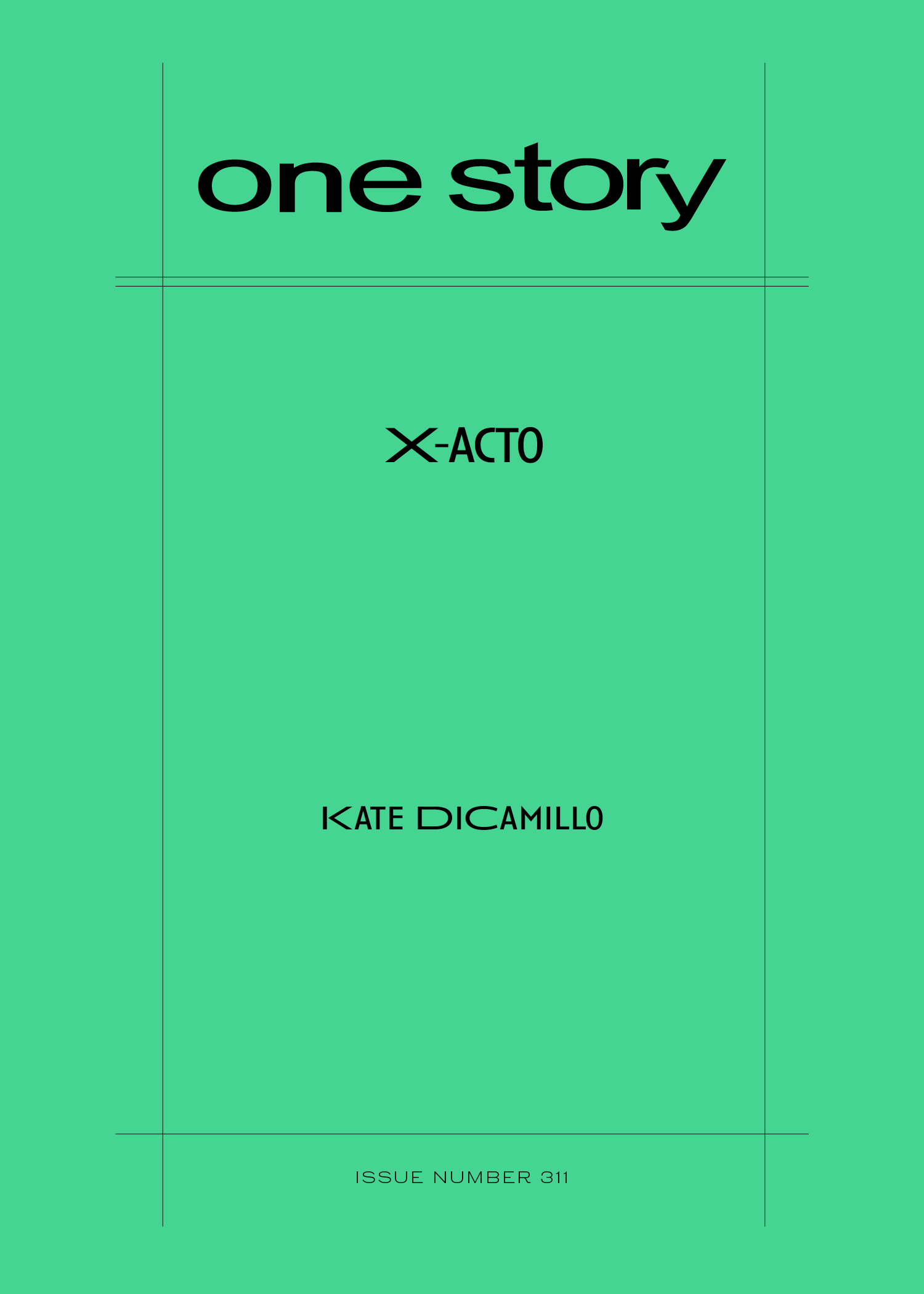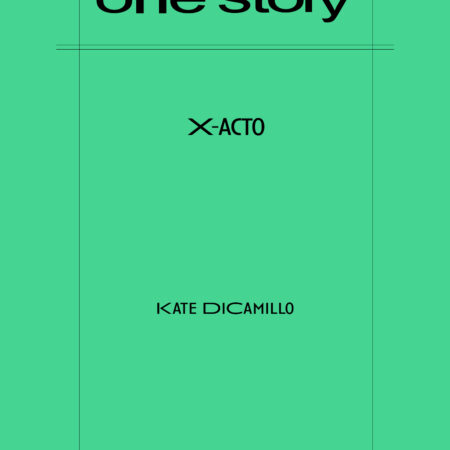
X-Acto
$2.50
99 in stock
Excerpt
It was 1973. Pen was eight years old; her brother, Thomas, was eleven. They were in Pennsylvania. They were spending the entire summer with their father and his girlfriend, a woman named Heidi who was an architecture school drop-out, and who made tiny houses out of white, thick cardboard.
“They’re just a hobby,” said Heidi. “A way to unwind, you know?”
Every line, every door, every wall of every house Heidi made was straight, exact, and true. Pen liked looking down at them and imagining herself inside their perfect emptiness—she held her breath because the houses were so fragile that it seemed as if someone could knock the walls down just by breathing on them.
I’ll huff and I’ll puff . . .
Also, Pen held her breath because she felt guilty admiring Heidi’s work. It seemed like a betrayal of her mother. She didn’t know why.
How did Heidi make the houses so perfect?
She used an X-Acto knife, that was part of it.
X-Acto.
To Pen, the knife name sounded as if it belonged to a magician—X-Acto, the Magnificent!
But also, it made her think of the word “exactly,” a word that belonged to her father.
Kate DiCamillo
Kate DiCamillo has written many books for children. She is currently at work on a novel and a collection of short stories. She lives in Minneapolis, Minnesota.
Patrick Ryan on “X-Acto”
I’ve always wondered if things that emotionally impact us as children shape us more than things that emotionally impact us as adults. On the one hand, of course they do. We’re still forming when we’re kids; what impacts us dents us. On the other hand, who feels dent-proof, once they turn twenty-one?
Kate DiCamillo’s new story, “X-Acto,” is about some impacting events that occur one summer while two young siblings, Pen and Thomas, are staying in Pennsylvania with their father and his new girlfriend, Heidi. It’s a story of quiet, potential menace. It’s also a story that asks how good and bad manage to co-exist in the world, given that power and control aren’t concerned with either.
But the story provides an answer to that question.
You’re probably familiar with Kate DiCamillo as the author of some of the best children’s fiction that’s ever been written. We’re thrilled to be putting into your hands a different kind of DiCamillo story—one that sees the complicated, deceptive, and sometimes frightening world of adulthood through the eyes of a child who is barreling toward it.
Q&A by Patrick Ryan
- PR: Where did you get the idea for this story?
- KD: I tend to think (as it were) in images. This story started with the image of the perfect tiny house and the big mansion kind of juxtaposed in my mind. And then came the fireflies and the bats hovering in that space in between the houses, and the story was somewhere in that space. I wonder if that makes any sense.
- PR: How long did it take you to get the story into a shape that you felt happy enough to stop tinkering with (until an editor asked you tinker some more)?
- KD: I wrote five drafts of it, letting it sit for long periods in between each draft.
- PR: Do you feel like the story is hopeful, overall? When I first read it, it felt sad and frightening to me. But the more I thought about it, it began to seem hopeful. Is it a hopeful story, or does it at least reach in that direction?
- KD: I think it’s kind of terrifying and hopeful—terrifying because the kids are so powerless, hopeful because they are finding ways to survive and be themselves in the world.
- PR: In several ways (some of them subtle), this story subverts the reader’s expectations. I don’t want to spoil anything for someone who hasn’t read it yet, so without citing any specific examples, I’ll ask—do you intentionally write these subversions into the story, or is it more that you see them when you look back?
- KD: Oh, it’s only in looking back that I can see those subversions. I write (as a writing teacher once told me) behind my own back. So a story for me is always a process of discovery.
- PR: Thomas is one of my favorite secondary characters ever. The “museum” game is brilliant. His little bursts of emotion are geyser-like and heartbreaking. Will you please write a short story about Thomas?
- KD: Thomas is near and dear to my heart, too. That museum game is where part of the hope comes from for me—Thomas’s insistence on being who he is. More Thomas stories. Yes.
- PR: Complete this sentence with one word: “‘X-Acto’ is about __________.”
- KD: Survival.
- PR: What are you working on now?
- KD: I am over here happily concocting fairy tales.
- PR: What’s the best piece of writing advice you’ve ever received/given/heard?
- KD: It’s from a poem entitled “Berryman” by W.S. Merwin: I asked how can you ever be sure that what you write is really any good at all and he said you can’t you can’t you can never be sure you die without knowing whether anything you wrote was any good if you have to be sure don’t write
